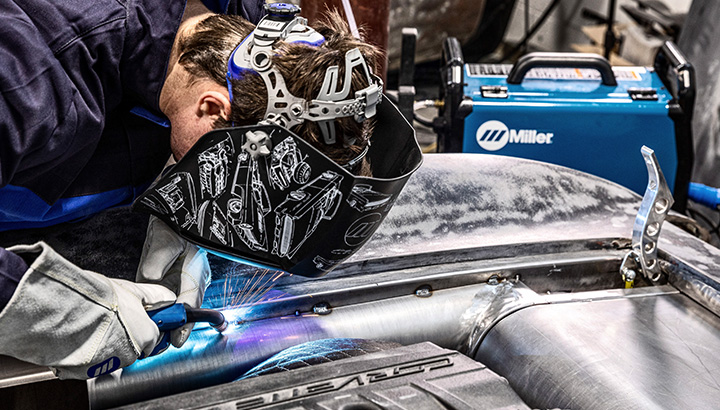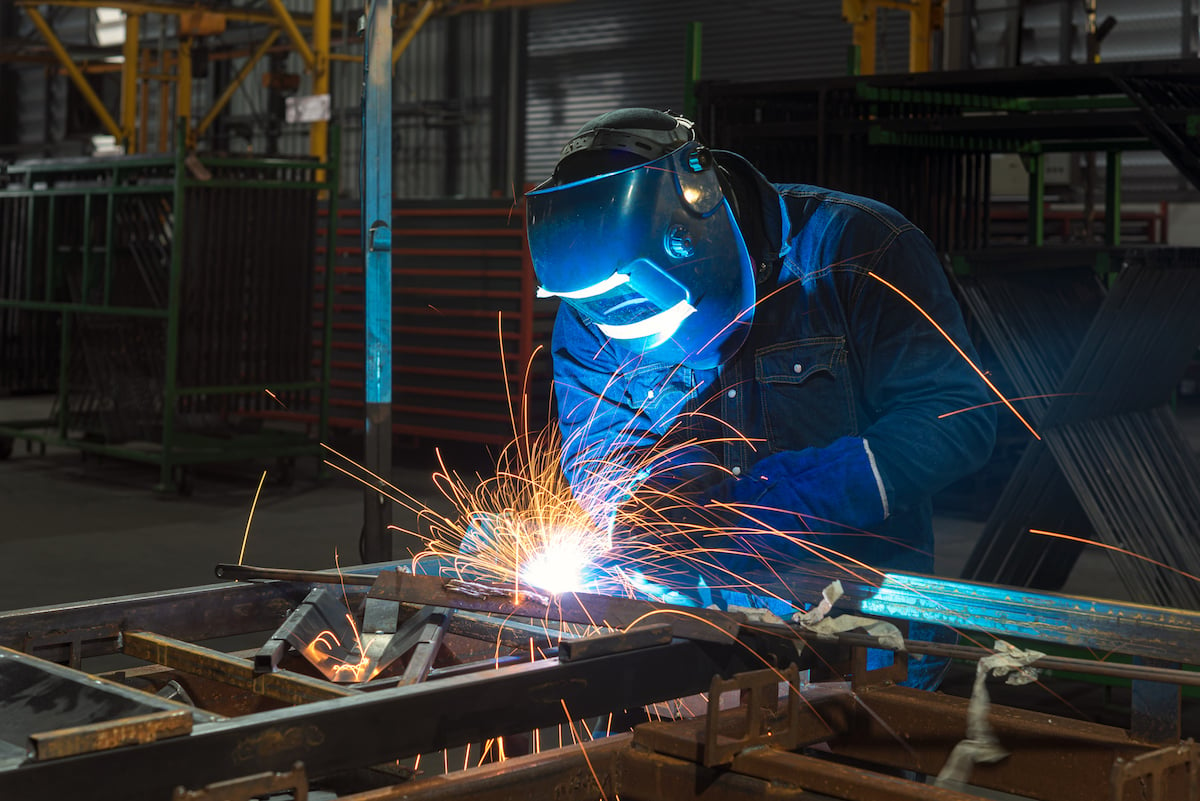Typical Welding Repair Service Issues and Just How to Address Them Effectively
Welding repair services typically encounter a variety of problems that can threaten the honesty of the final item. Common troubles consist of poor penetration, porosity, and imbalance, among others. Each issue provides distinct difficulties that need specific methods for resolution. Recognizing these issues is necessary for welders intending to boost their abilities and results. This conversation will check out these typical welding repair problems and efficient approaches to resolve them.
Poor Infiltration
Insufficient penetration happens when the weld metal falls short to completely fuse with the base product, causing weak joints and possible structural failures. This problem often originates from not enough warm input, inaccurate electrode angle, or improper welding speed. Welders might run into poor infiltration because of a mistake of the essential parameters for a certain product thickness or kind. Furthermore, contamination on the base material's surface can impede effective bonding, exacerbating the problem. To deal with poor penetration, welders ought to assure suitable setups on their devices and keep a clean job surface. Regular assessment of welds is recommended to recognize any type of shortages early, permitting for prompt corrections and the avoidance of compromised architectural integrity in bonded assemblies.
Porosity
Porosity is a common problem in bonded joints that manifests as tiny gas bubbles entraped within the weld metal. This issue can jeopardize the integrity of the weld, leading to reduced stamina and possible failure under stress and anxiety. Belgrade. Porosity usually develops from contamination, dampness, or incorrect welding strategies, which allow gases to leave right into the liquified weld swimming pool. To deal with porosity, welders should assure proper surface prep work, preserve a clean workplace, and utilize appropriate welding specifications. In addition, picking the ideal filler material and protecting gas can mitigate gas entrapment. Routine assessment and screening of welds can help identify porosity early, assuring prompt corrective activities are taken, consequently preserving the quality and dependability of the welded structure
Imbalance
Imbalance in welding can develop from numerous variables, consisting of inappropriate setup and thermal development. Comprehending the origin is important for reliable resolution. A number of correction techniques are available to straighten components and ensure architectural integrity.
Sources of Imbalance
Welding imbalance frequently originates from a range of underlying problems that can endanger architectural stability. One main cause is improper fit-up of parts before welding, which can bring about spaces and unequal surface areas. Variations in thermal expansion throughout the welding process can additionally result in distortion, specifically if the materials being signed up with have various coefficients of growth. In addition, inadequate fixturing and clamping might fall short to hold elements securely in location, leading to activity throughout welding. Badly kept tools, including welding equipments and devices, might introduce incongruities in the weld bead, more adding to imbalance. Ultimately, operator error, originating from not enough training or experience, can additionally play a considerable role in producing misaligned welds.
Correction Strategies Readily Available
Resolving misalignment effectively requires a mix of restorative techniques tailored to the particular problems at hand. One typical technique is using fixtures or jigs to hold parts in the appropriate position throughout welding, ensuring constant alignment. In addition, pre-heating the materials can help decrease distortion and enhance fit-up. For significant misalignment, mechanical realignment strategies, such as making use of hydraulic jacks or clamps, can be utilized to correct the setting prior to welding. Post-weld warm treatment might likewise be necessary to alleviate tensions triggered by misalignment. Mindful evaluation and change throughout the setup stage can stop misalignment issues from ending up being considerable troubles, advertising a smoother welding process and enhancing overall structural integrity.
Distortion
Distortion is an usual challenge in welding that can occur from numerous aspects, consisting of unequal heating & cooling. Recognizing the sources of distortion is necessary for implementing effective prevention strategies. Addressing this problem not just boosts structural integrity however likewise enhances the overall quality of the weld.
Sources of Distortion
When based on the intense heat of welding, products usually undertake changes that can result in distortion. This phenomenon largely develops from thermal expansion and tightening during the welding process. As the weld location warms up, the product expands; upon air conditioning, it gets, which can develop inner tensions. Additionally, irregular home heating throughout a workpiece can worsen these stress and anxieties, leading to warping or bending. The kind of material also plays a significant duty; metals with varying thermal conductivity and coefficients of expansion might react in a different way, bring about unforeseeable distortions. Additionally, inadequate joint design and poor fixturing can contribute to imbalance during welding, boosting the chance of distortion. Understanding these reasons is crucial for reliable welding repair service and prevention approaches.
Avoidance Techniques
Reliable prevention strategies for distortion during welding concentrate on regulating warm input and making sure proper joint layout. Preserving a constant heat input aids to decrease thermal development and tightening, which can result in distortion. Utilizing methods such as preheating the workpiece can additionally review minimize the temperature level slope, advertising uniform his comment is here heating. Furthermore, picking ideal joint styles, such as T-joints or lap joints, can enhance security and minimize anxiety concentrations. Implementing appropriate fixturing to protect the work surfaces in position even more help in preserving placement during the welding process. Staggered welding series can distribute heat much more equally, protecting against localized distortion. By using these methods, welders can significantly reduce the chance of distortion and improve the general high quality of their welds.
Breaking
Splitting is a common issue experienced in welding fixings, usually resulting from numerous aspects such as incorrect cooling prices, product selection, or inadequate joint preparation. The occurrence of splits can significantly compromise the stability of the weld, resulting in possible failings during operation. To resolve this concern, welders need to first analyze the source, making certain that materials are suitable and properly selected for the details application. In addition, regulating the air conditioning rate throughout the welding process is crucial; rapid air conditioning can generate stress and anxiety and result in fracturing. Appropriate joint style and preparation likewise add to lessening the risk. Implementing these techniques can enhance weld top quality and durability, inevitably decreasing the possibility of breaking in ended up weldments.

Insufficient Fusion
A substantial problem in welding repair work is insufficient combination, which occurs when the weld metal does not properly bond with the base product or previous weld passes - Montana Mobile Welding and Repair Belgrade Welding. This defect can lead to weaknesses in the joint, possibly endangering the integrity of the welded framework. Elements adding to incomplete blend include inadequate warmth input, improper welding strategy, and contamination of the surface areas being signed up with. To address this issue efficiently, welders must assure appropriate pre-weld cleansing and surface prep work, as well as readjust their welding parameters to attain adequate penetration and fusion. Routine assessment throughout the welding process can additionally assist recognize insufficient fusion early, enabling timely corrective actions to boost the overall quality of the usa weld weld
Overheating
While welding fixings can enhance architectural integrity, overheating presents a significant obstacle that can lead to material deterioration. Extreme heat throughout welding can modify the mechanical properties of metals, resulting in decreased toughness, boosted brittleness, and bending. This phenomenon is specifically important in high-stress applications where architectural integrity is critical. Determining getting too hot can include aesthetic assessments for discoloration or distortion, along with checking temperature level throughout the welding process. To minimize the threats connected with overheating, welders need to employ proper techniques, such as controlling heat input, changing travel rate, and making use of ideal filler products. Additionally, implementing pre- and post-weld heat therapies can help recover material buildings and improve the general high quality of the repair, making sure lasting performance and safety and security.
Often Asked Concerns
What Are the Common Indications of a Welding Issue?

How Can I Check My Welds for Quality?
To examine welds for high quality, one can make use of aesthetic inspections, ultrasonic testing, and radiographic methods. Each technique ensures architectural integrity, determines flaws, and verifies adherence to defined standards, ultimately boosting the integrity of the bonded joints.
What Security Precautions Should I Take While Welding?
When welding, one should prioritize safety by wearing suitable personal protective equipment, making sure proper ventilation, protecting flammable materials away, maintaining a clean office, and knowing surroundings to stop mishaps and injuries.
Can I Fix a Weld Without Renovating the Entire Joint?
Repairing a weld without renovating the entire joint is possible, depending upon the damages (Montana Mobile Welding and Repair Welding). Techniques such as grinding, including filler material, or utilizing a welding procedure can effectively address details flaws while preserving the surrounding framework
What Equipment Are Crucial for Effective Welding Repair Works?
Important devices for efficient welding repairs include a welding machine, wire brush, grinder, safety gear, clamps, and filler products. Each tool plays an essential duty in making certain top quality and safety and security during the repair service procedure. Porosity normally occurs from contamination, dampness, or incorrect welding strategies, which permit gases to run away into the liquified weld swimming pool. Inadequately kept tools, consisting of welding devices and tools, might introduce variances in the weld bead, further contributing to imbalance. When subjected to the extreme warmth of welding, products frequently go through modifications that can lead to distortion. Breaking is an usual problem come across in welding repair work, typically resulting from different variables such as improper air conditioning rates, material choice, or insufficient joint prep work. A significant issue in welding repair services is incomplete fusion, which happens when the weld metal does not appropriately bond with the base material or previous weld passes.